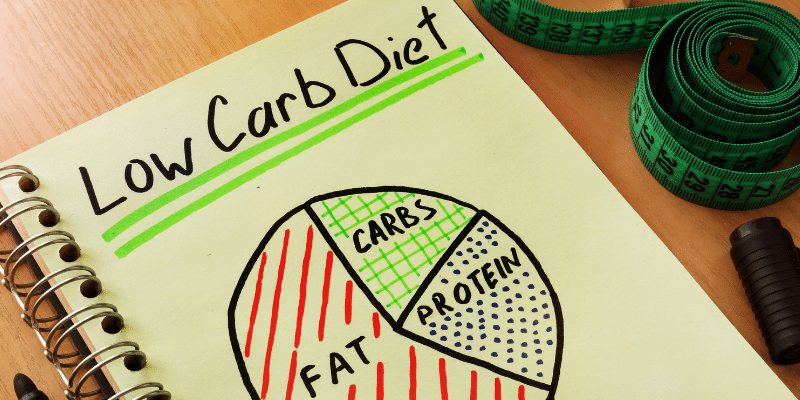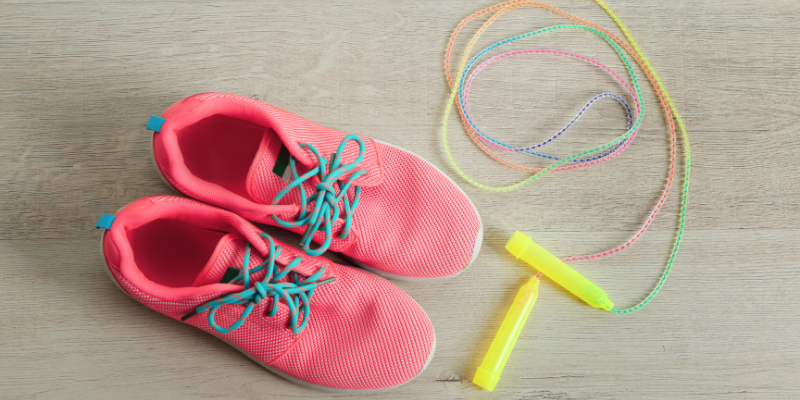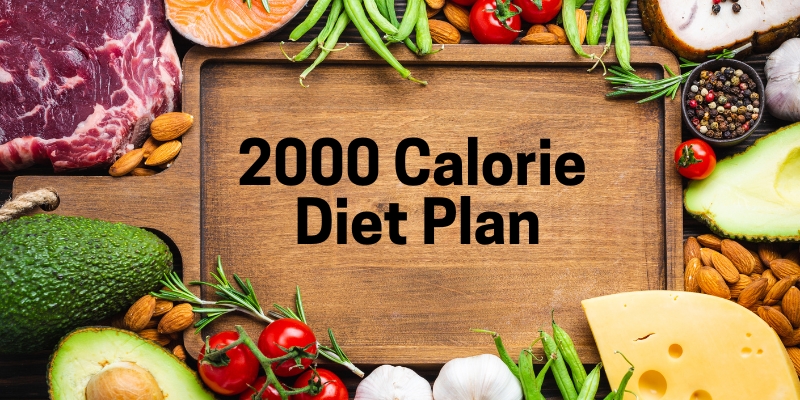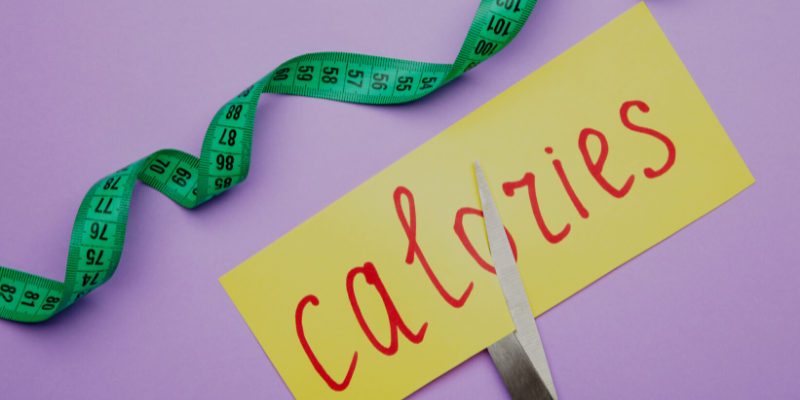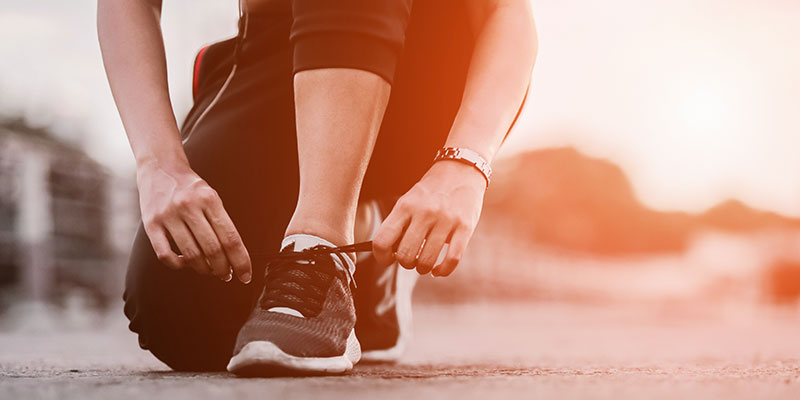Low-Carb Diet Plan For Weight Loss
A low-carb diet plan is a highly effective way to lose weight. It focusses on consuming foods high in protein and nutrient-dense while creating a calorie deficit for quick weight loss. Here is a detailed explainer that tells you all you need to know about a low-carb diet plan.
What is A Low-Carb Diet?
A low-carb diet plan for weight loss entails restricting carbohydrates while consuming more proteins, healthy fats, whole foods, fruits, and vegetables. Cutting down complex and refined carbohydrates will help create a calorie deficit that promotes faster weight loss.
It is important to note that not all low-carb diets are the same. There are different variations with a focus on consuming different types of carbs. The ultimate goal is to include fewer carbs and eat more nutrient-dense foods that will optimise your weight loss.
NOTE:
You must consult a nutritionist before you go on a low-carb diet to avoid any health complications that may arise.
How Does A Low-Carb Diet Help In Fast Weight Loss
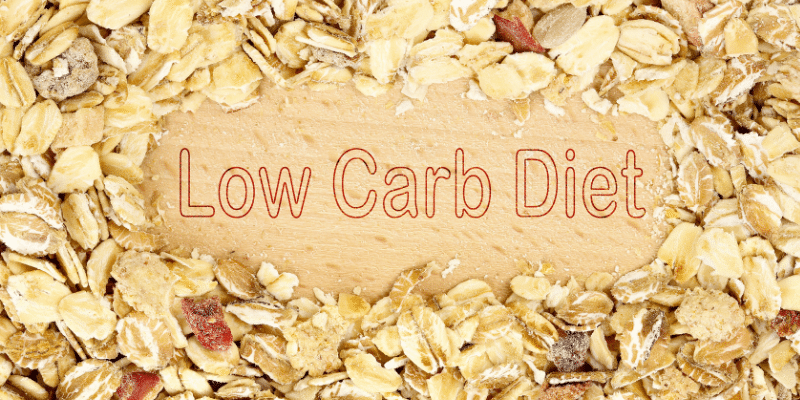
A low-carb diet promotes weight loss in the following ways:
- Increases Calorie Burn: Studies show that a low-carb diet is a great way to create the calorie deficit required for losing weight without compromising your nutrient requirements. Apart from that, low-carb diet plans assist in increased calorie burn, helping you lose weight faster.
- Improves Metabolism: A low-carb diet is great at boosting the body’s metabolic function and lowering your appetite. Also, eating fewer carbs and more proteins, fibre, etc., will increase your satiety and reduce cravings. This automatically leads to calorie restriction.
- Stimulates Fat Burn: Reducing unwanted carbs from your diet and consuming more proteins, along with a moderate amount of physical activity, will enhance fat burning. Studies show that it is effective in burning harmful visceral or belly fat.
- Helps Maintain Optimal Weight: As per several studies, a low-carb diet is excellent at targeting fat without drastically reducing other components of your body weight. This is especially helpful when you want to get rid of stubborn fat while maintaining your ideal weight.
- Improves Dietary Patterns: Research shows that following a low-carb diet gradually improves one’s eating and dietary patterns. Eating fewer carbs means you are less likely to experience frequent cravings and hunger pangs, which gives way to healthier eating habits.
- Faster Weight Loss: Contrary to popular opinion, studies found that low-carb diets work better and faster at reducing weight than low-fat diets.
Must Read: How to Lose weight in One Month?
Additional Health Benefits Of Following A Low-Carb Diet Include
- Manages Blood Sugar Levels: Limiting carbs and sugars leads to reduced sugar levels and better blood sugar management among people who have diabetes.
- Improves Digestion And Gut Health: A low-carb diet helps improve digestion and relieves you of common digestive issues such as gas, acid reflux, bloating, diarrhoea, and more. Improved gut health is essential for the smoother digestion of food.
- Better Lipid Profile: Including more lean proteins in your diet leads to a decrease in cholesterol, especially high-density lipoprotein (HDL) cholesterol. With time, the diet creates a better lipid profile.
- Enhances Cardiovascular Health: Including high amounts of fibre in the form of fresh fruits and vegetables will help regulate blood pressure and improve cardiovascular health.
- Prevents Metabolic Syndrome: A low-carb diet is highly effective in preventing metabolic syndrome as you eliminate foods high in sugars and refined carbs that are major culprits for developing the risk of diseases associated with it.
- Boosts Brain Health: Eating a low-carb and high-protein diet helps in boosting brain health, improves focus and clarity.
- Greater Energy Levels: Including more protein-based foods in your diet will give a sustained boost to energy levels as the body starts burning fat for fuel.
- Healthier Skin: Eating fewer carbs will give you clearer, healthy and radiant skin with lesser bouts of acne.
- Helps In Stress Management: Eating a good amount of vegetables and fruits provides the body with healthy antioxidants that help regulate cortisol and reduce stress.
- Reverses Type-2 Diabetes: Since a low-carb diet is great at reducing the overall sugar intake, it can help manage blood sugar levels and is also effective in reversing Type-2 diabetes when followed consistently.
Must Read: Indian Diet Plan For Type 2 Diabetes
Low-Carb Diet Foods
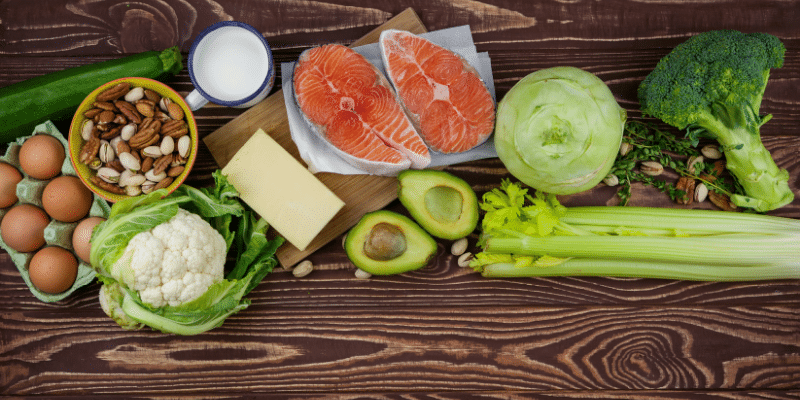
Here is a list of foods you can include in your low-carb diet:
- Fruits: Have fruits such as berries, oranges, watermelon, and peaches as they are low in carbs.
- Vegetables: Vegetables that you can include are broccoli, cauliflower, zucchini, spinach, asparagus, eggplants and more.
- Nuts And Seeds: Nuts and seeds such as walnuts, almonds, flax seeds, sunflower seeds, etc., are great but eat them in moderation.
- Dairy: Feel free to include dairy options high in fat, such as high-fat cheese, full-fat milk, heavy cream, yoghurt, and more. Avoid artificially flavoured and low-fat products.
- Fats And Oils: Include foods that are sources of natural fats such as coconut and olive oils. You can also include high-fat sauces such as Hollandaise sauce.
- Meat: Choose organic or grass-fed meats that you can consume along with skin and fats. You can eat any meat such as chicken, mutton, pork, lamb, etc.
- Fish And Seafood: You can consume all types of fatty fish and seafood options such as salmon, sardines, trout, prawns, etc., that contain high amounts of Omega-3.
- Eggs: You can eat eggs in any form that you enjoy – boiled, scrambled or fried. See if you can buy pasture-raised eggs.
- Beverages: Consume a lot of water to stay hydrated. You can choose from sparkling or flavoured water but check for ingredients such as sugars. You can also have coffee or tea with milk or full-fat cream.
- Dark Chocolate: You can eat dark chocolate that contains at least 70% cocoa and is high in antioxidants but in moderation.
- Wines: You can have dry wine that does not contain added sugars but in moderation.
Must Read: How To Use Olive Oil For Weight Loss?
What Not To Eat On Low-Carb Diets?
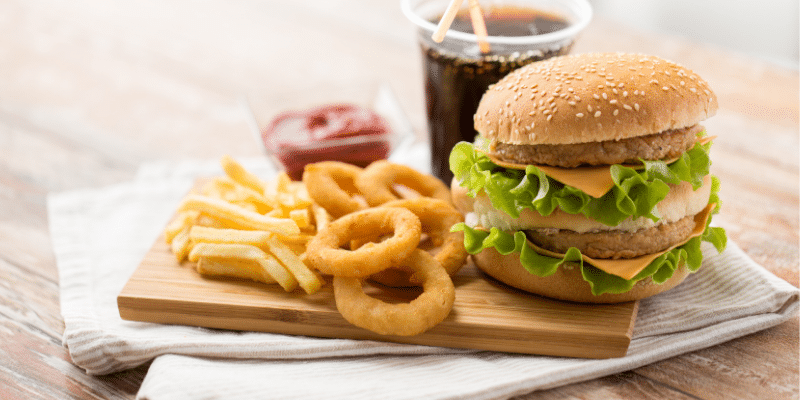
Foods you must avoid while on a low-carb diet plan:
- Starchy Vegetables: Don’t consume starchy vegetables such as potatoes while on a low-carb diet. You can have root vegetables but in moderation.
- Sugars: Stay away from sugary foods and beverages such as soft drinks, sodas, fruit juices, chocolates, and ice creams.
- Refined Carbohydrates: You must avoid sources of refined carbohydrates and starchy foods like rice, pasta, wheat, rye, cereals, porridge, muesli, and bread.
- Trans Fats: Consider including healthy fats and avoid foods containing trans fats such as hydrogenated oils.
- Low-fat Foods: Foods labelled as low-fat, diet or gluten-free as they may contain a high amount of sugars.
- Alcohol: Alcoholic drinks, especially beer that contains a high number of calories.
- Highly Processed Foods: Processed, packaged and unhealthy foods containing additives, preservatives and sugars.
- Certain Fruits: It is best to limit fruits such as figs, raisins, and mangoes, usually high in sugars and carbs. You may consume blueberries, strawberries and raspberries.
A Low-Carb Diet Chart For Weight Loss
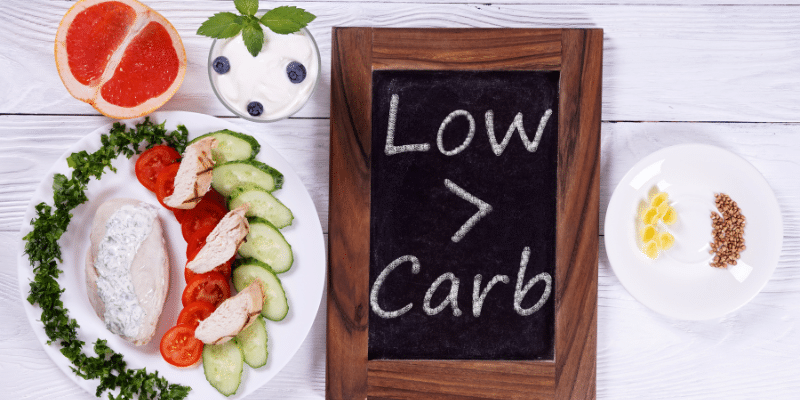
Here is a sample low-carb diet chart to help you kick start this diet regimen. You can make changes as per your needs and your lifestyle requirements.
Note: It is advisable to consult an expert before starting a new diet plan.
Day 1
- Breakfast: Lemon water with chia seeds, omelette with assorted vegetables or two mung dal chillas fried in olive oil and berry smoothie in almond milk.
- Lunch: Boiled chickpea salad, one grilled chicken or one grilled block of cottage cheese with assorted vegetables and one cup of brown rice along with herbs and one orange.
- Snacks: One cup of coffee with full-fat cream and a handful of almonds.
- Dinner: One cup of lentil soup, stir-fried vegetables with cauliflower rice and hollandaise sauce.
Day 2
- Breakfast: Chia seeds water, banana pancakes without eggs topped with cream and honey or two eggs scrambled on toast. Half avocado garnished with sesame and sunflower seeds.
- Lunch: Egg wrap or paneer wrap with a vegetable salad with olive oil and balsamic vinegar dressing. 1/2 a cup of berries.
- Snacks: One orange.
- Dinner: One grilled salmon with vegetables like zucchini and broccoli and one cup of brown rice or tofu curry with two bajra rotis and salad. One cup of buttermilk.
Day 3
- Breakfast: Cinnamon detox water, mushroom omelette with whole-wheat bread or spinach and cauliflower upma with mint sauce.
- Lunch: Chickpea or chicken and vegetable salad with quinoa and cherry tomatoes. One cup of almond milk smoothie with blueberries.
- Snacks: One medium apple and one cup of chamomile tea.
- Dinner: Boiled peanut salad with cream of mushroom soup, cabbage and peas stir fry or tandoori chicken with two multi-grain rotis and salad and one cup of curd.
Day 4
- Breakfast: Lemon detox water, broccoli poriyal or bacon and eggs. Smoothie with coconut milk, berries and protein powder.
- Lunch: Vegetable or chicken quesadillas with cream sauce and salad and one cup of red grapes.
- Snacks: One cup of tea with creamer.
- Dinner: Baked fish in herbs with sautéed vegetables or zucchini stir fry with one cup of brown rice.
Day 5
- Breakfast: Chia seed water, one raspberry smoothie in skimmed milk, two boiled eggs or two almond flour dosas with homemade coconut chutney.
- Lunch: Chicken or vegan burrito bowls with a green salad and one cup of yoghurt with mixed berries.
- Snacks: Two plums and a handful of walnuts.
- Dinner: Mushroom masala or chicken curry with two multi-grain rotis, one cup of yoghurt and one cup of green salad.
Day 6
- Breakfast: Lemon mint water, cauliflower upma or omelette with broccoli and mushrooms and cheese. One cup of Greek yoghurt with nuts.
- Lunch: Vegetable or chicken soup, paneer tikka or chicken tikka with two multi-grain rotis and one cup of green salad.
- Snacks: Broccoli and kale salad.
- Dinner: One prawn spaghetti with cherry tomatoes or one tofu bhurji with two bajra rotis and one cup of salad.
Day 7
- Breakfast: Lemon detox water, omelette with sautéed green vegetables like kale, baby spinach and pok choy or cauliflower poha with veggies. Chia seeds pudding with nuts.
- Lunch: Paneer or chicken butter masala with one cup of brown rice or two whole-wheat rotis with one cup of curd and salad.
- Dinner: Stir-fried prawns and vegetables or stir-fried paneer with cauliflower rice.
- Snacks: Vegetable salad with olives.
Must Read: How to Drink Water To Lose Weight?
Expert Tips To Follow While On A Low-Carb Diet Plan
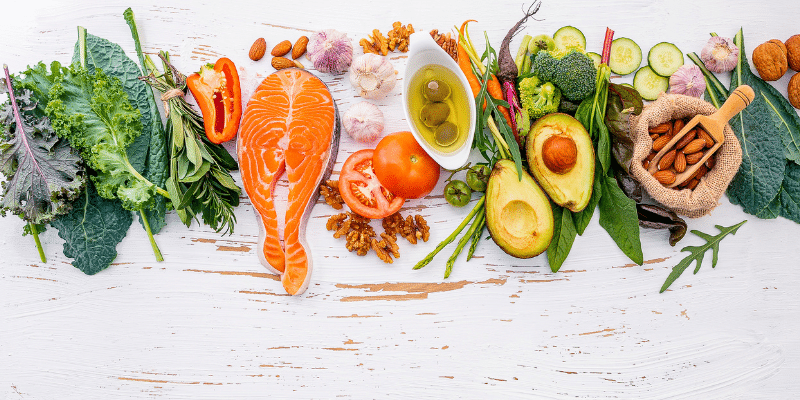
Here are a few expert tips that will help you achieve the best results from a low-carb diet plan for weight loss:
- Eat Fewer Carbs For Breakfast: People who follow a low-carb diet will generally feel less hungry in the morning, so you can opt to eat fewer carbs for breakfast.
- Snack Mindfully: You won’t feel the urge to snack frequently when on a low-carb diet. If you wish to eat something right away, opt for low-carb snacks like nuts, cheese and eggs.
- Include Proteins In Moderation: For your body to enter ketogenesis and assist in fat loss, you need proteins. Include them for this purpose and aim for 1.5 to 2 gms of proteins per kg of body weight. Don’t overeat as they may convert amino acids back to glucose, defeating the purpose of a low-carb diet for weight loss.
NOTE:
It is best to check with a nutritionist and avoid any complications.
- Eat Healthy Fats: When on a low-carb diet, you must eat a good amount of healthy fats to provide your body with enough energy. Include foods with healthy monounsaturated and omega-3 fats. Avoid trans-fats.
- Increase Your Salt And Water Intake: To combat and minimise the symptoms of the induction flu (see below), you can increase your salt and water intake as it helps your body recover better.
- Try Carb Cycling (Under Supervision): Carb cycling is a process that involves alternating between high carbs and low carbs each day for several days, weeks or months, depending on individual needs. This helps the body improve its metabolism and speeds up weight loss.
- Check Food Labels: You will find many foods in the market labelled as ‘low carbs’. Make sure that you thoroughly check the nutritional content as they contain unhealthy substitutes for carbs.
Must Read: Healthy Eating Habits For Weight Loss!
Plan Your Meals In Advance
This will encourage you to consistently stick to the diet plan and prevent you from indulging in unhealthy foods.
- Choose Low-Carb Options: Foods high in starch are high in carbs, so look for healthy alternatives like replacing mashed potatoes with mashed cauliflower.
- Give It Time: If you experience symptoms such as headache, fatigue, gastrointestinal trouble, etc, be patient and give your body some time to adjust.
- Take Up Low To Moderate-Intensity Exercise: Include moderate-intensity physical activity that does not require much endurance or energy while following the low-carb diet plan. You can try yoga, Tai-chi and breathing exercises.
- Include More Zero-Calorie Liquids: It is best to have low-calorie liquids such as green tea without sugar or buttermilk in between meals to keep yourself full.
Who Should Avoid The Low-Carb Diet?
It is advisable to consult a nutritionist to deem the suitability of a low-carb diet for you. Avoid this diet in case you fall in any of the following groups:
- Pregnant and breastfeeding mothers.
- Suffering from cardiovascular diseases and diabetes or if you are on medications.
- Your lifestyle or job is highly exhausting.
- Any serious health issues or chronic conditions such as kidney diseases.
Side Effects Of A Low-Carb Diet
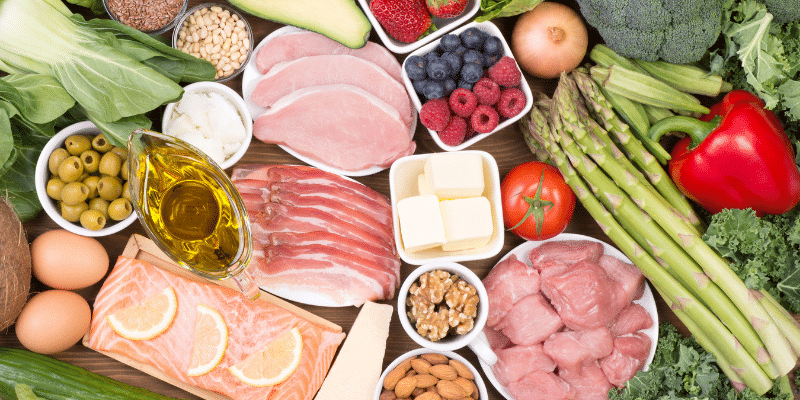
The following are some side effects that you may experience when you go on a low-carb diet, as your body takes time to adjust to the changes:
- Induction Flu: One of the most common side effects after starting a low-carb diet is the symptoms of induction flu such as headache, dizziness, fatigue, irritability, and nausea.
- Cramps: You are likely to experience cramps in the legs and arms.
- Gastrointestinal Issues: Some may experience digestive issues such as constipation and diarrhoea in the first week.
- Reduced Energy Levels: You might feel less energetic and notice a drop in physical performance initially.
- Bad Breath: You might notice a strong, unpleasant odour in your mouth as you begin the diet. This is a sign that your body has started burning ketones by converting fat into fuel.
- Slightly Elevated Heart Rate: During the first one or two weeks, you may experience a slightly raised heart rate due to the consumption of fewer carbs.
Conclusion
By limiting carb consumption, you can achieve weight loss and improve your overall health. Compared to other diets, eating fats and proteins while cutting back on carbs will also keep you satiated for long. However, make sure to eat fewer unhealthy or processed foods and follow all the tips to make the most of your low-carb diet plan. You will surely see visible results.
Our certified subject matter experts do extensive research and collate facts from reputed scientific journals and international studies to create informative and engaging articles related to all your dermatology concerns. They strive to help you decipher medical jargon, distinguish fact from fiction and overcome paranoia. Our qualified medical board or expert panel goes a step further to verify these facts based on their rich academic knowledge, vast clinical experience and critical industry insights to ensure you consume only medically accurate content that empowers you to make informed decisions about your hair and skin-care treatments and weight management. Check out our Editorial policy for further details
https://pubmed.ncbi.nlm.nih.gov/31705259/https://www.ncbi.nlm.nih.gov/pubmed/25527677
https://www.ncbi.nlm.nih.gov/pubmed/27059106
https://pubmed.ncbi.nlm.nih.gov/31878131/
https://care.diabetesjournals.org/content/32/7/1147
https://www.ncbi.nlm.nih.gov/pubmed/16871438
https://pubmed.ncbi.nlm.nih.gov/33441384/
https://www.ncbi.nlm.nih.gov/pmc/articles/PMC2633336/
https://www.ncbi.nlm.nih.gov/books/NBK537084/
https://www.ncbi.nlm.nih.gov/pmc/articles/PMC4737348/




